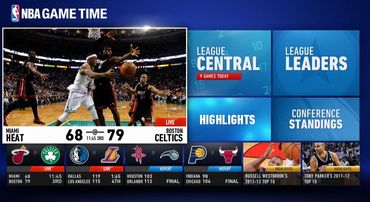
Some of my favorite childhood memories are of overnight camping trips.
Whether it was a fishing trip or church camp, those thoughts still make me smile. After a day of swimming and catching fish, everyone huddled around a campfire to sing songs (mostly off key) and tell stories (mostly about fish we didn’t catch). The stories I looked forward to the most were the scary ones, from someone who really knew how to tell a tale. Sometimes it was my Uncle John, a master storyteller in our family, or some wacky camp counselor who had clearly spent too much time outdoors. Flash-forward 30 years and I still like to hear a good story. But if you’re at all like me – a job, raising kids, paying bills, household chores – I have very little time to read. Life gets in the way of a good book. So, I started listening to stories online. About 15 years ago, when I was still a webmaster, we called it “audioblogging.” It wasn’t until Ben Hammersley’s 2004 article in The Guardian that we had a name for it: podcasting. Podcasting has really grown up since 2004, thanks in part to professional storytellers on series such as Planet Money and Radiolab. It’s the perfect blend of spoken word and investigative journalism. Yesterday, the team behind successful podcasts This American Life and Serial launched a new, seven-episode series titled S-Town. To be sure, there was a lot of anticipation for this series. This American Life and Serial have a huge cult following, so there was reason to expect this kind of reception for S-Town. Brian Reed, host of S-Town and producer with This American Life is my new Uncle John, my new wacky camp counselor. I just started Chapter 2 – “Has anybody called you?” – and I’m absolutely intrigued. Early yesterday morning, starting at about 7 a.m., people started downloading episodes of S-Town to their mobile devices. Twitter and Facebook were alive with S-Town listeners. Here is a sample of their comments: “@cearnett: So I definitely thought @stownpodcast was going to be about some tiny little town well south of me, not somewhere I drive through regularly”; and “@wplittle: The first 15 minutes of @stownpodcast have changed me as a person.” I tweeted: “People will wonder why productivity is down for March. Blame it on college basketball. Not @stownpodcast. Shh ... no one will know better.” If you didn’t guess, @stownpodcast is the official handle for S-Town. What makes S-Town so successful, and why people like me flock to this kind of content, has everything to do with storytelling on budgeted time. I’m able to listen on my time schedule, on my commute to work, or while I’m exercising. And if you’re going to tell me a good story, I might actually get on the treadmill and stay on just a little longer.
0 Comments

Fans own professional sports.
Sure, billionaire owners make deals and millionaire players sign the big contracts. But fans make choices every day about whether or not to care about sports. Case in point: read the stories about the panic among NFL execs when TV ratings dropped this past season. Even the Super Bowl took a ratings hit. Fans are distracted. There’s a lot of content from which to choose, and that content is on a lot of different screens. I just did a quick count of the Earnheardt house. We have 24 screens. To attract distracted fans, the “Big 4” professional leagues (MLB, NBA, NFL, NHL) started investing more resources into their online platforms. This past year, those investments started paying off. It appears that at least two of the four big leagues found the sweet spot with their platforms: Major League Baseball and the National Basketball Association. “I really like MLB’s At Bat and NBA Gametime,” said Terry Collins, a reporter for CNET News. “Both have really clean sites, and I can get my share of highlights and data without having to do a lot of searching.” Collins is the jack-of-all-trades journalist at CNET News. He writes about sports, politics, health and social media. He spent six years covering major breaking news in the San Francisco Bay Area for the Associated Press. When you think sports and technology, you probably think ESPN or Fox Sports and not CNET. Sure, CNET is probably best known for technology reviews. They get all the cool new gadgets and provide reviews, rankings, and how new technology can actually make our lives a little bit better. But technology is ubiquitous, and one of the best examples of the pervasive nature of technology is sports. Take Collins’ endorsement of the NBA’s Gametime platform. “I like [NBA Gametime] because of League Pass mobile and the third option for watching games with practically a courtside view,” Collins said. “It’s a much closer view of the action.” Collins is a West Coast guy. So another feature he likes has to do with start times for East Coast games, something fans in the Pacific time zone have lamented for decades. “I really appreciate it because I can catch some of the early games that start at 4 p.m. on the West Coast,” Collins said. “I’m often still at work when games start in the East.” Collins also likes MLBAM (MLB Advanced Media), and thinks it will be running all major sports sites someday. “MLBAM is really doing a lot of things, and they’ve become such a diverse entity by working on sites like the WWE,” Collins said. “No wonder ESPN/Disney wants to someday buy a full stake in [MLBAM].” You can read Collin’s stories at cnet.com, and check out his recent piece on second chances for busted NCAA March Madness brackets.  WikiLeaks founder, Julian Assange WikiLeaks founder, Julian Assange
Depending on where or what you read about WikiLeaks, or with whom you discuss its impact, you’re bound to get different opinions.
Those discussions often lead to questions such as “what is WikiLeaks?” Or the bigger question: “how does WikiLeaks affect me?” The first question is easy to answer. The second question, not so much. Reading the WikiLeaks entry on the other well-known wiki, Wikipedia, probably provides the most balanced description. According to Wikipedia, WikiLeaks is a “non-profit organization that publishes secret information, news leaks, and classified media from anonymous sources. Its website claims a database of 10 million documents in 10 years since its launch. Julian Assange is generally described as its founder, editor-in-chief and director.” That’s a fair and balanced definition. Even if WikiLeaks doesn’t like it, they can just hack in and change it, right? However, WikiLeaks takes a more nuanced approach to describing what it is they do. According to its site, “WikiLeaks specializes in the analysis and publication of large datasets of censored or otherwise restricted official materials involving war, spying and corruption.” Releasing documents on war and spying bothers some people. Releasing corruption details is met with less resistance (except from the corrupt individuals and governments, of course). In a Der Spiegel interview, Wikileaks founder Julian Assange said, “WikiLeaks is a giant library of the world’s most persecuted documents. We give asylum to these documents, we analyze them, we promote them and we obtain more.” In essence, WikiLeaks positions itself as a window into in the deepest, darkest, and often illegal, corners of governments and corporations. WikiLeaks made headlines last week by publishing a large collection of secret CIA documents. The ominously named “Vault 7” contains 8,761 pages of classified files. In its press release, WikiLeaks promised this document dump to be the first in the “Year Zero” series. The series promises to focus on documents given to WikiLeaks that expose the CIA’s plan to gather information from digital devices. So, the CIA has hacking capabilities. That’s not news. So, the CIA can use security flaws in iPhones and Samsung TVs. That’s news. I’m not an investor, but I suspect that news didn’t help Apple or Samsung stock prices. That’s what WikiLeaks is and does. They take secret documents, like those leaked to them from the CIA, and make them publicly available to be scrutinized and, to some extent, to shame government agencies and leaders. As for that second question, how WikiLeaks affects you. I’ve had the “WikiLeaks make us stronger/weaker” debate, and the “we are safer/unsafe with WikiLeaks” argument, more than I care to count. Even if the CIA isn’t spying on Americans, someone might be. Take the proper steps to protect your private information and, as always, avoid sharing those salacious secrets on social media. 
I’m verified on Twitter.
I know this because of the blue verified badge that sits next to my profile, and because Twitter sent me a congratulatory email. According to Twitter, this badge lets people know that my account is of public interest, and it’s authentic. Verification on Twitter is the equivalent of a wedding band. When I first got married, a good friend said the wedding band was as a seal of approval. “The wedding band makes you slightly more attractive because it shows that someone vouches for you,” he said. My wife liked me enough to put a ring on it. So did Twitter. The process of Twitter verification is not an automatic one. Case in point: the @Vindicator account. One would assume that Twitter would automatically verify our renowned, award-winning newspaper. Not so. It wasn’t until a few weeks ago that the @Vindicator received the blue badge of approval, thanks to The Vindicator’s social media Sherpa, Sean Ferguson. “The process was really easy and user-friendly,” Ferguson said. “Within two days, The Vindicator account was verified and there was a jump in followers, all due to that little blue (verified badge).” Ferguson went to the verification form, entered some basic information, and voila, The Vindicator received Twitter legitimacy. For media outlets, the process for verification is simple. For the rest of us, the process is a little more cumbersome, and it can take months. It took me a few shots before receiving verification, which really makes Twitter’s review process all the more genuine. If Twitter denies your verification request, they require you to wait 30 days before submitting a new one. To start the verification process, go to support.twitter.com and search “verify an account.” You’ll find a list of requirements for making your account verifiable. Start with the basics. Your account must have a verified phone number, confirmed email address, bio, profile and header images, and website. You also need to set your tweets to “public” in the privacy settings. If you’re verifying an individual account, have a copy of your government-issued photo ID ready to upload (e.g. license, passport). That’s the easy part. The tough part is proving your account is of public interest. Regardless if you’re in music, acting, fashion, government, politics, religion, journalism, media, sports, business, or some other key interest area, you need to prove your worth. Be ready to tell Twitter why your account should be verified. What is your impact on your field if interest? If you’re a company, what’s your mission? Next, find some URL’s that help express your newsworthiness or relevancy in your field. Twitter also suggests the following:
Follow these steps and you’ll be on the path to that coveted blue badge. 
Instagram is the over-achiever of the social media world.
Each week seems to bring new third-party applications for capturing, manipulating and sharing stunning images. Last week, the photo-sharing platform introduced a new feature that gives users the option to upload multiple photos and videos in one post. “With this update, you no longer have to choose the single best photo or video,” Instagram said in its announcement Wednesday. “Now, you can combine up to 10 photos and videos in one post and swipe through to see them all.” Adding multiple photos and videos is simple. To find the files you want to share, look for Instagram’s new icon. It resembles a picture of layered images, and at least for now, the icon reads “select multiple.” “It’s easy to control exactly how your post will look,” Instagram said. “You can tap and hold to change the order, apply a filter to everything at once or edit one by one. These posts have a single caption and are square-only for now.” Your followers will find it just as easy to navigate your multiple images. On the profile grid, the first photo or video of the new post will have a small icon, indicating there’s more to see. Of course, this new tool is one of many to add to your Instagram arsenal. Check out these additional tools for creating amazing images for your feed: 1. Font Studio (Android). If you’re looking to add quotes, artwork, and layers of different fonts, this app has it all. Font Studio has over 100 fonts, with more available for download. Rotate, enlarge, and shrink text to fit your image, or change the color of your text, alter the transparency, and add shadows. Although the focus with Font Studio is on typography, you can adjust the brightness, contrast, saturation and blur of an image. When you’re masterpiece is complete, add one of more than a dozen filters. It’s free in the Google Play store. Check out Font Candy for iOS devices for an app with similar features. 2. Slow Shutter Cam ($2.99, iOS). Before I pay for any app over 99 cents, I do my homework. This app is worth every penny. Slow Shutter Cam puts the power of a DSLR on your iPhone. For a free Android equivalent, check out Camera FV-5 Lite, or the pay $3.95 for the full version. Slow Shutter Cam offers three capture modes. Motion Blur puts your camera in shutter priority mode for waterfall effects. Light Trail picks up on fast moving lights from cars and fireworks to create light stream effects. Low Light does just as the name suggests, picking up on every light source to create amazing images in the dark. Other Slow Shutter Cam highlights include an unlimited shutter speed, real time image previews, freeze, blur strength and time-lapse controls. |
AuthorDr. Adam C. Earnheardt is special assistant to the provost and professor of communication in the department of communication at Youngstown State University in Youngstown, OH, USA where he also directs the graduate program in professional communication. He researches and writes on a variety of topics including communication technologies, relationships, and sports (with an emphasis on fandom). His work has appeared in Mahoning Matters as well as The Vindicator and Tribune-Chronicle newspapers. CategoriesArchives
July 2023
|
 RSS Feed
RSS Feed